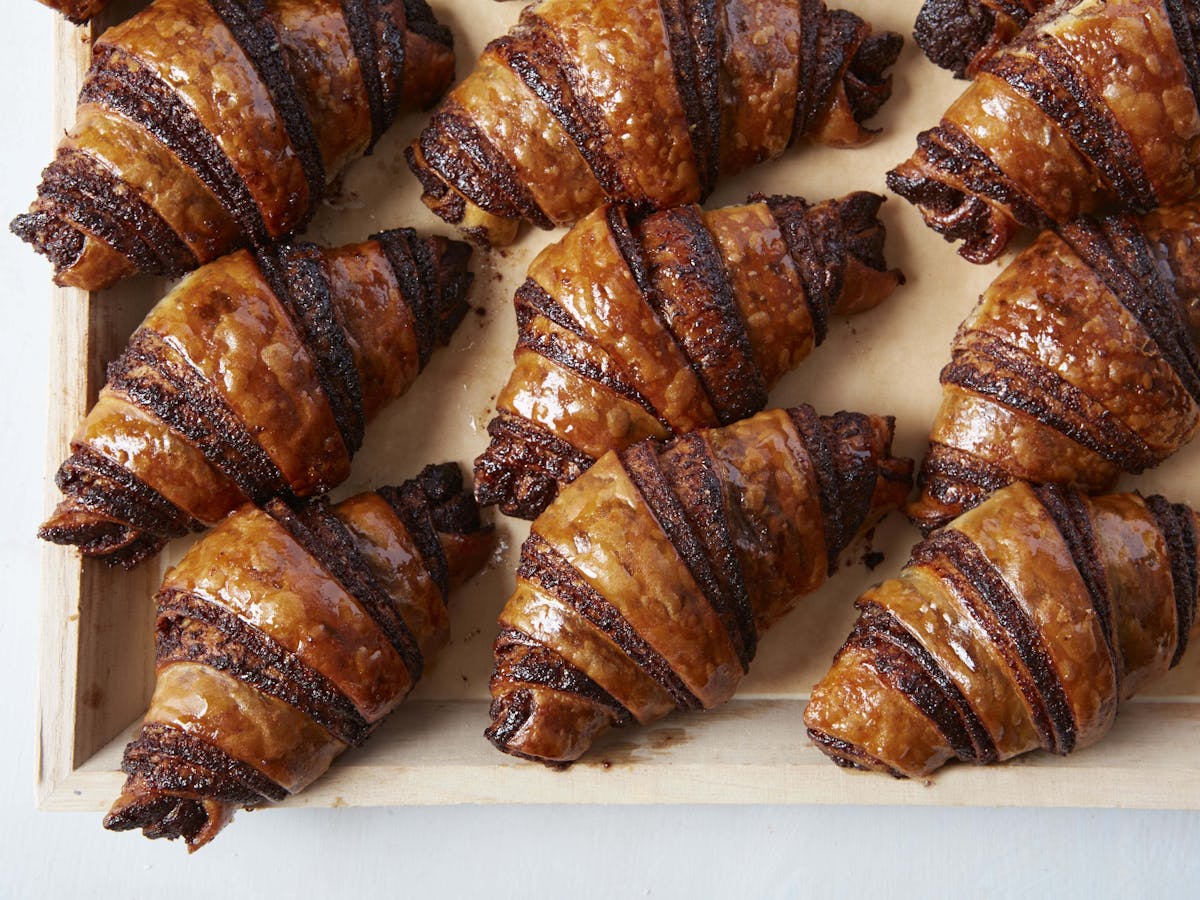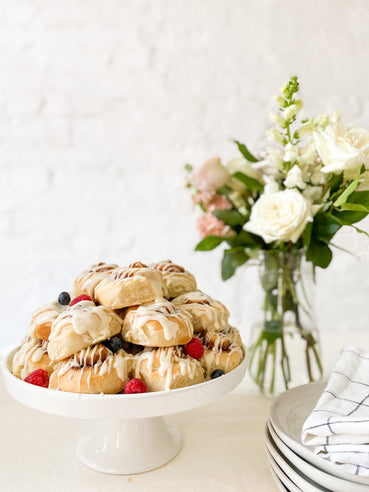Economical Finger Food Catering Maddington for Any Kind Of Occasion
Economical Finger Food Catering Maddington for Any Kind Of Occasion
Blog Article
Understanding the Art of Bakery Products: From Freshly Baked Breads to Tempting Pastries and Finger Foods
From the science behind the excellent loaf of bread, where fermentation and gluten advancement play essential functions, to the skill needed for developing layered breads, each facet exposes a compelling story of craftsmanship. The versatility of finger foods highlights just how taste and texture can be skillfully incorporated to engage varied preference preferences.
The Scientific Research of Bread Making
At the heart of every loaf of bread exists an interesting interaction of chemistry and biology. The process of bread making begins with the combination of flour, salt, yeast, and water-- each component playing an important duty in the last item. Flour consists of proteins, primarily glutenin and gliadin, which, when blended with water, form gluten (Birthday Party Maddington). This elastic network is necessary for trapping gases produced during fermentation.
Yeast, a living microorganism, ferments the sugars present in the flour, producing co2 and alcohol in the procedure. The carbon dioxide gas develops bubbles in the dough, triggering it to climb and create a light structure. The temperature and humidity throughout fermentation significantly influence yeast task and, subsequently, the bread's taste and texture.

Mastering Bread Methods
How can one attain the delicate equilibrium of structure and taste that defines remarkable bread? Mastering pastry techniques needs a deep understanding of components, methods, and the scientific research behind them. Essential to this craft is the choice of top notch ingredients-- flour, butter, sugar, and eggs-- each playing a crucial function in the last product's flavor and texture.
The method of lamination, which entails folding layers of dough and butter, creates the desired flakiness in breads like croissants and smoke bread. Precision in temperature is important, as butter ought to stay cold to ensure optimum layers. In a similar way, correct blending approaches, such as the creaming method for cakes, guarantee also unification of air and fat, resulting in a light and airy crumb.
Furthermore, maintaining the right humidity levels during baking can dramatically influence the end result, guaranteeing that pastries rise correctly and accomplish that golden-brown surface. The art of bread also demands persistence and method; each effort improves one's ability and understanding of the elaborate balance called for to develop alluring pastries that thrill the senses. Proficiency in these methods inevitably identifies a competent pastry cook from an amateur.
Types of Finger Foods
The globe of cooking thrills extends beyond breads to include a large selection of finger foods, which are commemorated for their comfort and convenience. These bite-sized deals with are excellent for social celebrations, providing a variety of tastes and structures that satisfy diverse palates.

On the sweeter side, bite-sized cupcakes and small tarts offer a fascinating finish to any type of meal, interesting those with a sweet tooth. Cheese and charcuterie boards offer as an innovative selection, enabling guests to personalize their attacks with an assortment of meats, fruits, cheeses, and nuts.
Taste Profiles in Baking
Cooking is an intricate dance of flavor profiles that incorporates sweet, mouthwatering, and umami notes to produce a harmonious experience for the palate. Understanding these accounts is vital for bakers seeking to elevate their creations.
Sweetness frequently offers as the foundation in baked goods, with sugars, fruits, and all-natural sugar boosting flavor depth. Active ingredients such as chocolate and caramel Related Site introduce complicated sweet notes that can either dominate or enhance other tastes. Alternatively, mouthwatering elements, commonly discovered in breads and breads, give equilibrium and comparison. Components like herbs, seasonings, and cheeses can change an easy dough right into a diverse flavor experience.
Umami, often neglected in baking, plays a considerable function in improving flavors. Active ingredients such as aged cheeses, fermented items, or perhaps specific nuts add to a mouthwatering depth that boosts general preference.
Additionally, the interaction of acidity from components like buttermilk or citrus passion can brighten flavors, using a revitalizing counterpoint to sweetness. By thoughtfully combining these flavor profiles, bakers can craft products that reverberate with varied palates, producing an unforgettable culinary experience. Ultimately, grasping flavor profiles is essential to technology in the world of cooking.
Necessary Baking Devices and Components
Comprehending taste accounts in baking sets the stage for picking the right devices and active ingredients that help with the development of phenomenal baked goods. A dependable set of baking frying pans-- such as sheet frying pans, loaf frying pans, and cake pans-- is important for achieving desired forms and appearances.
In regards to components, high quality issues significantly. Flour acts as the backbone of a lot of dishes; selecting the ideal type-- be it all-purpose, pastry, or bread flour-- can substantially affect the outcome. Sugar not just sweetens however also contributes to texture, while eggs act as binders and leavening agents. Cooking powder and cooking soft drink are important for developing lift in cakes and pastries.
Furthermore, integrating flavor boosters like vanilla remove, seasonings, and citrus enthusiasm can elevate your that site productions. By making sure access to these fundamental tools and ingredients, bakers can with confidence start their cooking trip, crafting a diverse range of fascinating baked products.
Verdict
Proficiency in bread production, pastry prep work, and finger food discussion discloses the intricate relationships in between processes and ingredients. Finger Food Catering Maddington. Exploring varied flavor accounts enriches the baking experience, while vital devices and components offer the structure for success.
Just how can one attain the fragile equilibrium of texture and flavor that defines extraordinary bread? Essential to this craft is the selection of top notch active ingredients-- flour, butter, sugar, and eggs-- each playing a crucial function in the last product's taste and structure.

Recognizing flavor profiles in cooking collections the stage for picking the right tools and active ingredients that help with the creation of remarkable baked items. Exploring varied flavor accounts enriches the baking experience, while crucial devices and active ingredients give the structure for success.
Report this page